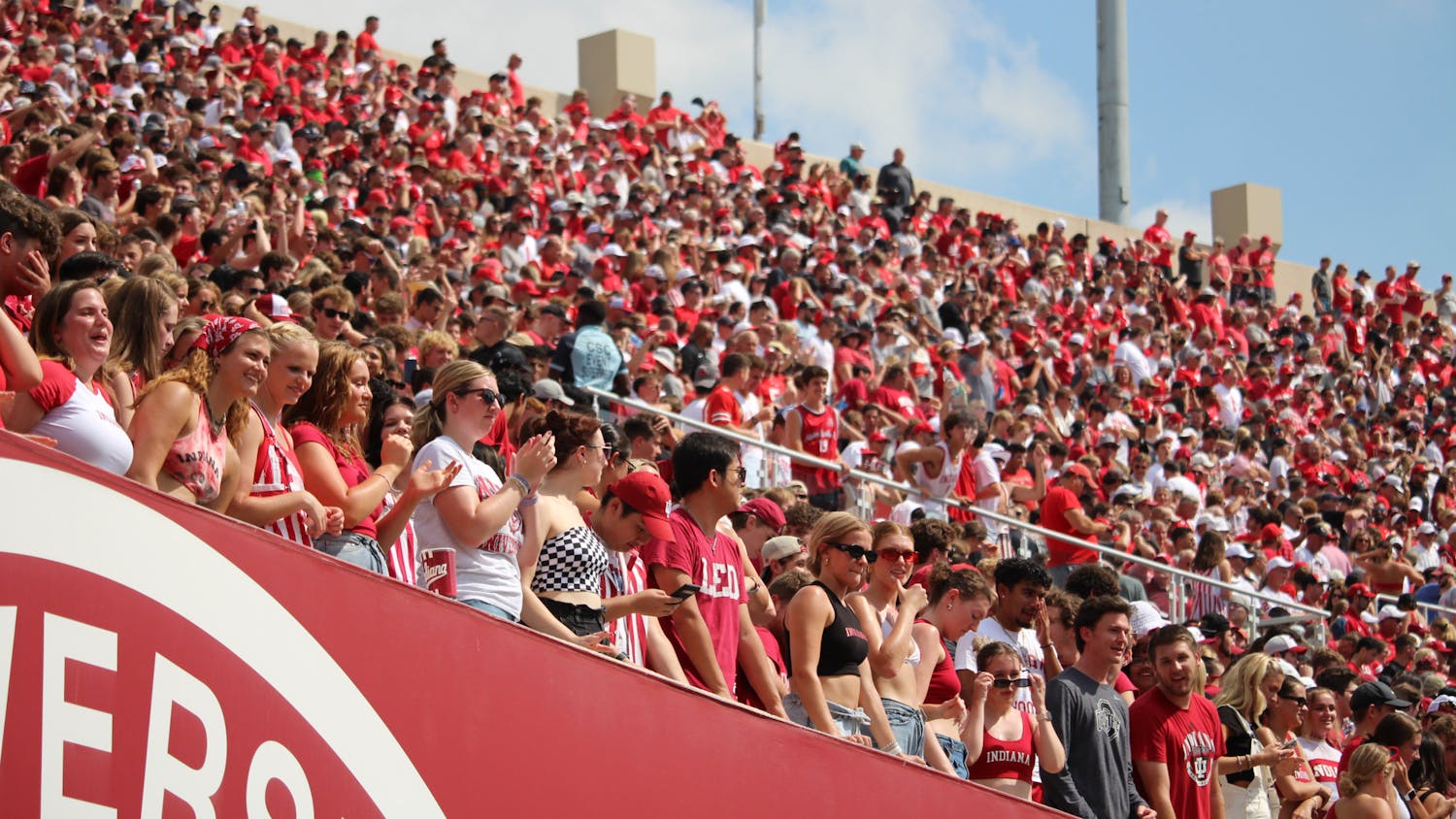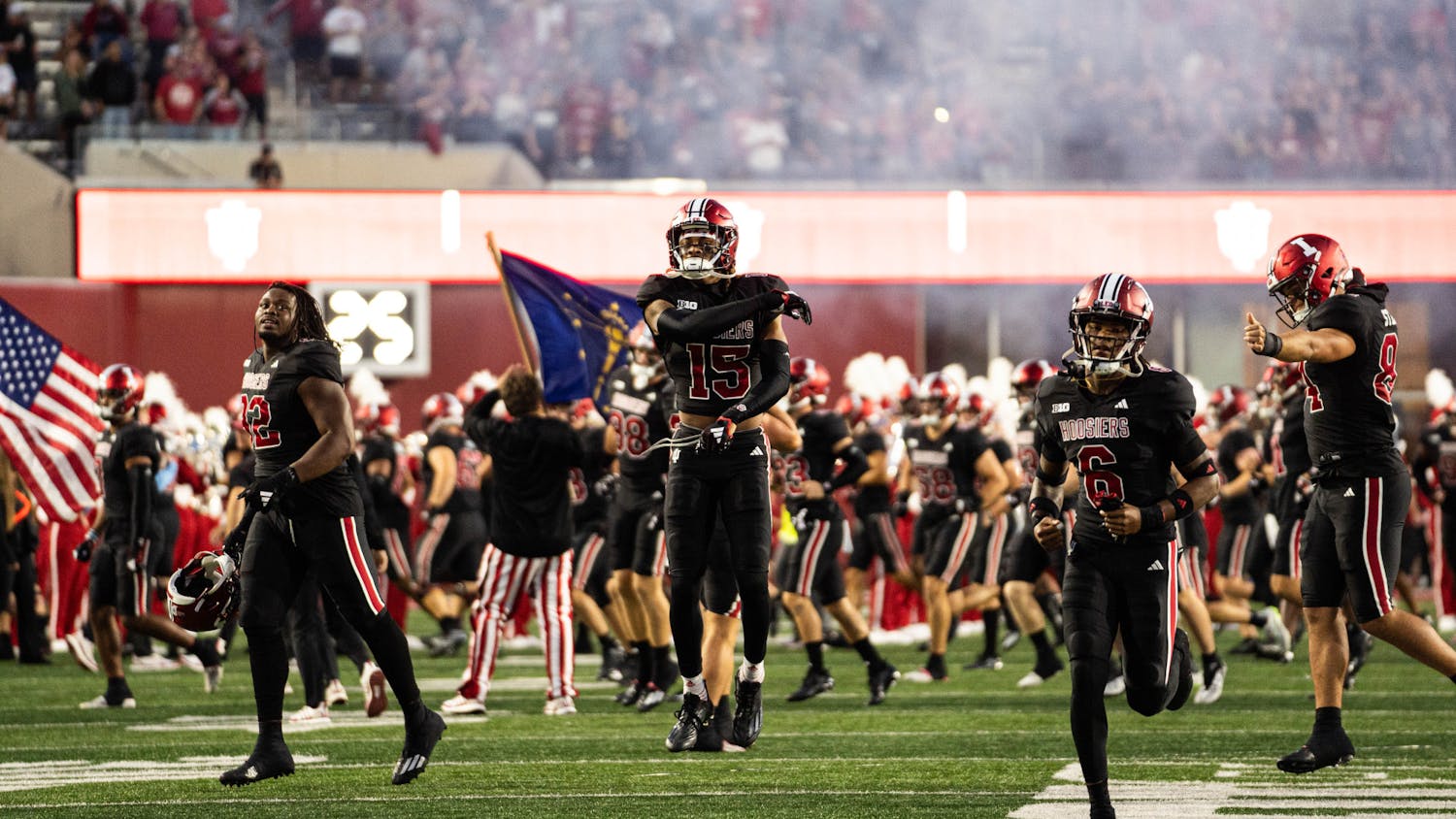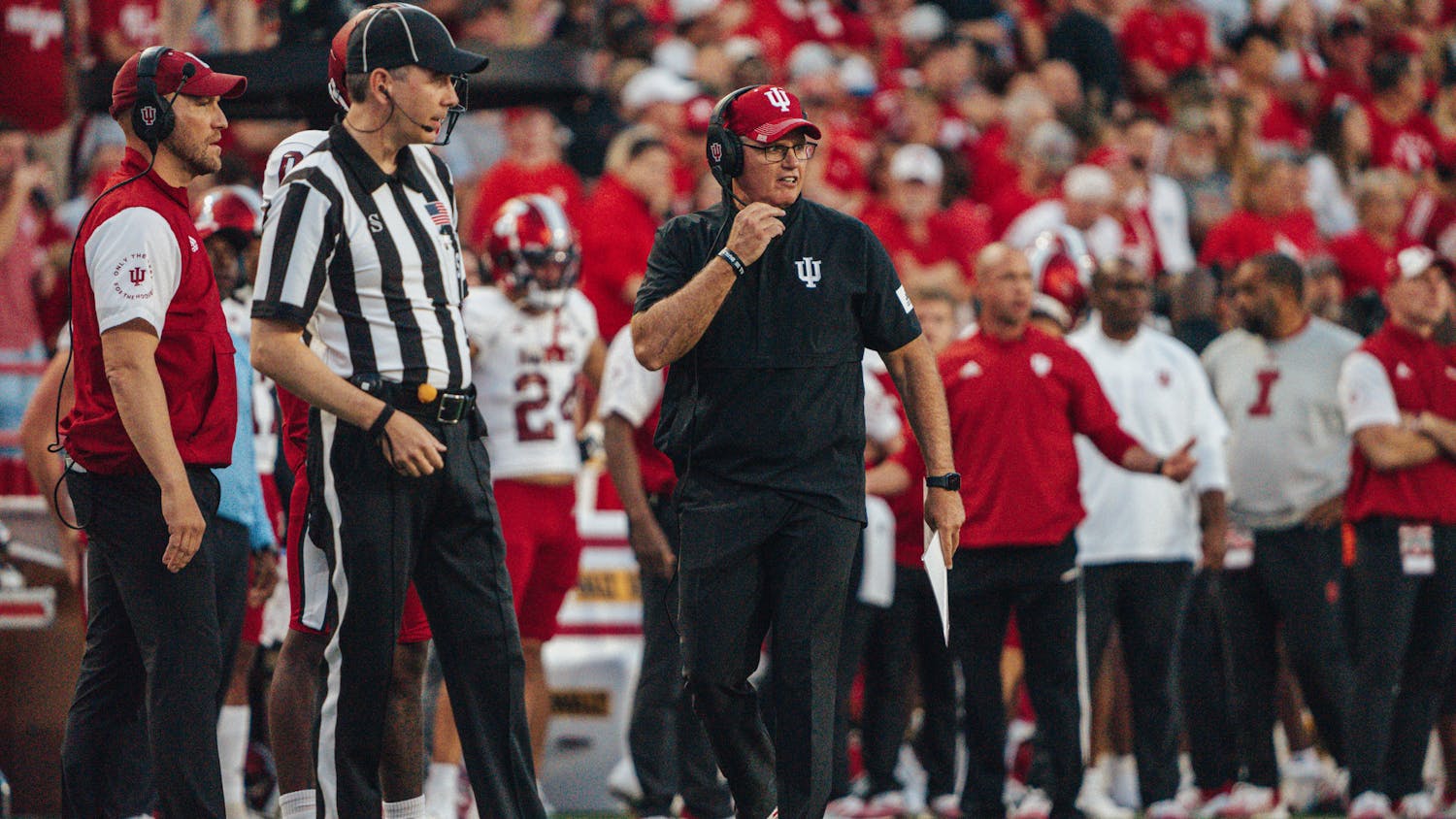There is one high school in Milbank, South Dakota, a town of just over 3,000 people nestled in northeast South Dakota.
In the early 1990s, IU offensive coordinator Kalen DeBoer walked the halls of Milbank High School, a star on the small school’s football team.

Bob Young, the head coach at Sioux Falls (NAIA), met DeBoer on the recruiting trail. South Dakota told DeBoer he would need to become a linebacker. Young told him he could play receiver for Sioux Falls.
“He selected USF over University of South Dakota,” Young said. “They wanted to make a linebacker out of him, and I told him he could play wide receiver or basically any position he wanted to just to get him in our program. He chose USF.”
The Cougars finished 2-8 in DeBoer’s first year as a player, though Sioux Falls would never have a losing record again with DeBoer in the program. Sioux Falls went 8-3 in 1994, 11-1 in 1995 and won the national championship in 1996 with an unblemished 14-0 season.
DeBoer was a key piece to that success, forming a dominant trio on offense with quarterback Kurtiss Riggs and running back David Ruter. DeBoer finished with 234 receptions, 3,400 yards and 33 touchdowns in his career. He was an All-American in 1996.
Sioux Falls also gave DeBoer the chance to play college baseball, where he was equally excellent at the NAIA level. DeBoer hit .520 in his senior season with ten home runs and 34 RBIs. His career batting average was .492.
DeBoer’s collegiate numbers led to him getting a chance to play with the Canton Crocodiles (now Washington Wild Things of the Frontier League) for one season in 1998. DeBoer hit .272 in 81 at-bats with the Crocodiles, according to Baseball-Reference.
The stint for playing baseball in Ohio lasted just one year. DeBoer headed back to Sioux Falls, and became an assistant coach at Washington High School.
“He went on to coach in Sioux Falls as an assistant coach at Washington High,” Young said. “Didn’t take me long to get ahold of him and get him over to USF to help out on offense.”
DeBoer came back to Sioux Falls after two years at the high school level to coach under Young, who quickly became a mentor to DeBoer.
DeBoer had spent so much time with Young over his four years playing at Sioux Falls, now he got to work with his coach. Though this time, DeBoer worked as an offensive assistant along with Riggs at Sioux Falls. Young wasn’t just a coaching mentor for DeBoer while he was in Sioux Falls, he was also a father figure that DeBoer didn’t really have growing up.
“He and his dad had a different relationship for quite awhile,” Young said. “I think they are closer now than they were back in those days. When you’re a head coach, I think this happens with a lot of players and coaches, you kind of become their dad in a lot of ways. You spend more time with them at that phase of their life to guide them more than their parents do almost for about four years there. You’re with them so much. I guess probably that I had a pretty good influence on him from the standpoint of being the moral standpoint.”
Link: 'We've got to compete': Indiana makes historic investment in hiring Kalen DeBoer as offensive coordinator
From 2000-2004, DeBoer worked as Young’s offensive coordinator. With DeBoer as Young’s offensive coordinator, Sioux Falls won less than 11 games only once.
When Young retired after the 2004 season, Young was promoted to head coach. After going 11-2 and losing in the NAIA semifinals in his first year at the helm, DeBoer would lose just one game from the 2006 season through 2009. DeBoer won national championships in 2006, 2008 and 2009. In each of those three seasons, DeBoer was named the AFCA NAIA Coach of the Year. During his five seasons as a head coach at Sioux Falls, DeBoer had a 67-3 record.
“I really felt like they were ready to take over the program, and move it to a higher level than I had.” Young said of DeBoer, Riggs, and defensive staff members including Chuck Morrell. “While we certainly experienced some success together, I certainly felt like they were the four guys that really stepped up. They had such a great chemistry, the four of them, and that just kind of carried over on the team. They were tough. They were young guys who had a whole other level of enthusiasm than the old coach had.”
Young joked that when watching DeBoer’s offensive, it isn’t hard to tell he was a wide receiver. DeBoer uses the pass to set up the run, Young said. Throughout his coaching career, DeBoer has benefited from strong quarterback and wide receiver duos, which has been a key to the productive offenses he has led throughout his career. At Fresno State, DeBoer had Marcus McMaryion at quarterback, who DeBoer turned into an extremely productive player, and a major factor in the turnaround DeBoer engineered on offense after the Derek Carr era in central California.
“I think he’s definitely a receiver. He likes to throw the ball,” Young said.
Though Young also emphasized that even though DeBoer likes to throw the ball, his personal scheme will likely not be forced. DeBoer has had the luxury of coaches giving him the freedom to do what he wants with an offense throughout his career. Where DeBoer gets freedom from the coaches, he also gives freedom to his players.
“You can see some of the same plays he’s running out there at Fresno, he’s just running them at the right time,” Young said. “We started them when he was at USF and he still uses a lot of that same philosophy that he just expanded on from what he learned when he was at USF that made him so successful there. Freedom for players to play the game on the field, and not to restrict them by overseeing them too closely, just really giving them freedom on the field to make decisions. Seeing what he’s doing right now, it doesn’t surprise me.”
At IU, DeBoer will get that freedom, as head coach Tom Allen will be largely focused on assisting first-year IU defensive coordinator Kane Wommack and focusing on day-to-day oversight of the program. Throughout the hiring process, Allen was determined to find the ‘head coach of the offense.’ Someone who can work with personnel without the head coach looking over his shoulder.
The success DeBoer has had implementing his system is something Young attributes to his preparation. Young said DeBoer would spend hours watching film, something Young never had time to do at the same level while teaching a class.
“If you spend a little time with him in preparation, it’s hard to imagine how much film he watches. How he just watched defenses. He’ll come up with certain plays at the right time. He’s just so well prepared. He does so much film watching of the opposition, and he’s just really creative. The motions, and he’ll move players around and I think this is what helped. We started doing some of that in ’96 when we won the national championship, there were certain things we did that create mismatches. I think he just built on that.”
DeBoer comes to Indiana after spending time at various levels of college football. After leaving Sioux Falls, DeBoer went to Southern Illinois, followed by Eastern Michigan and Fresno State respectively. DeBoer was the offensive coordinator at each of those schools, and had a high level of success wherever he went.
In Bloomington, DeBoer will be taking the next step in his journey as the offensive coordinator and associate head coach of the Hoosiers. Like it was for Allen, Indiana will be DeBoer’s first power conference job. Young and DeBoer discussed the Indiana job when DeBoer went home to South Dakota over Christmas. Young said from a football perspective, DeBoer had no question it was the right move, but it came down to moving his family across the country, including his daughter who, according to Young, is a very talented softball player.
“The journey for me and why I'm coming here,” DeBoer explained at his introductory press conference. “I think that the Big Ten challenge -- just like a player wants to compete at the highest level, you want to get to that highest level and show what you can do, prove it, prove it to yourself, prove it to others, whatever it might be. But you want those challenges.”
While coming to a power conference school may have been the logical next step for DeBoer, it won’t come without challenge. But Young believes that is a challenge DeBoer is prepared for.
“This is a dream for him to get to this level of football, and be able to really apply himself,” Young said. “I guess that’s really the way it is for all coaches trying to climb that ladder to the highest level, and take a program. He saw what we did as USF starting way back then, and developed it into what people really never expected to happen to a national level. We were one of the small schools in the country and he saw what happened there when he did a lot of things the right way. When you have the right personnel and you fit the program to the personnel you have, I think that’s what he’ll do at Indiana.”
'I think that’s what he’ll do at Indiana': Kalen DeBoer's journey from Sioux Falls to IU
More
Kylee Corman
· November 27



